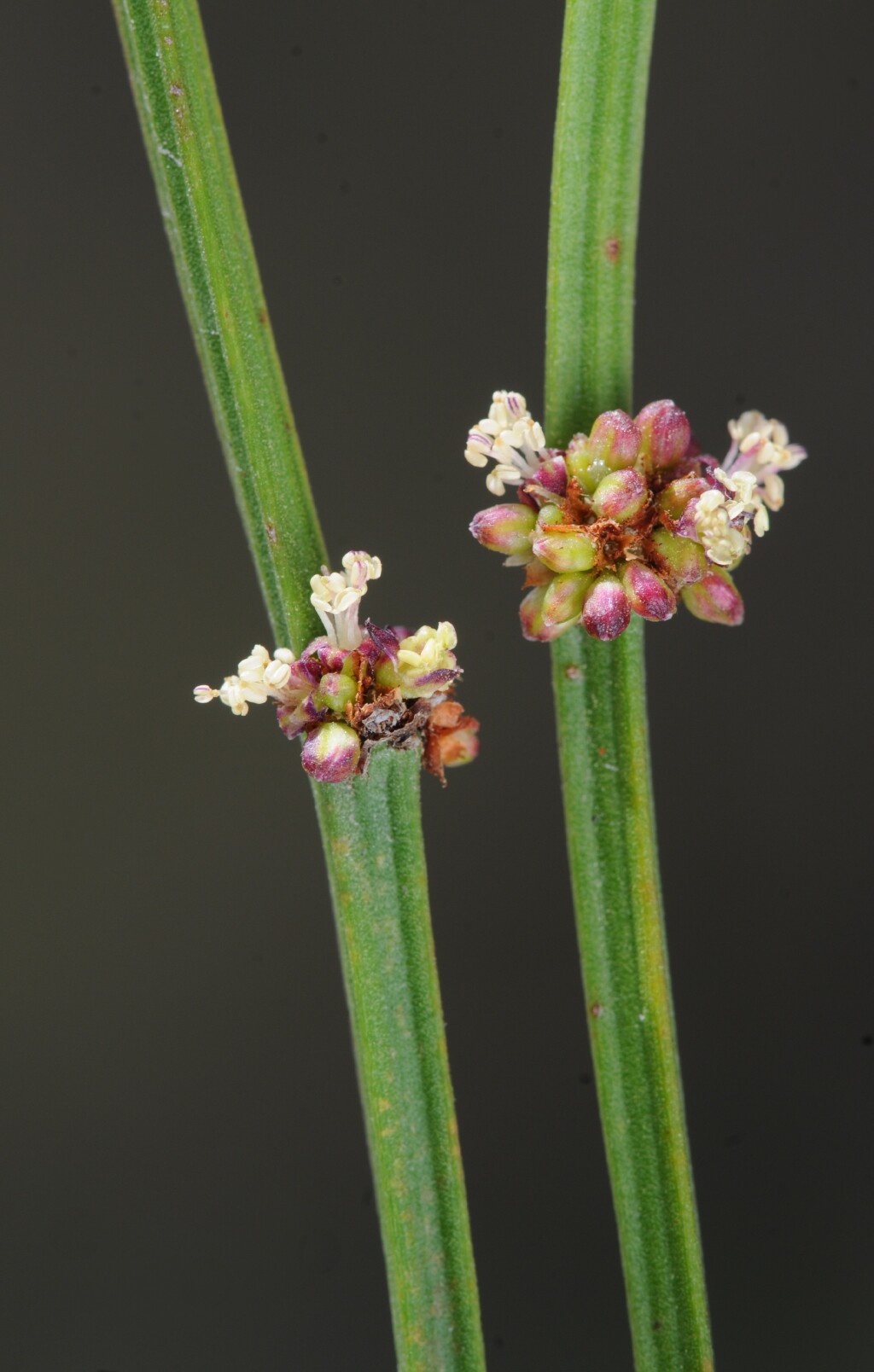Amperea xiphoclada var. xiphoclada
Broom SpurgeErect subshrub 20–90 cm high, usually dioecious, rarely monoecious (at least in Victoria); stems rigid, angular, sometimes more or less leafless. Leaves when present alternate, sessile; lower leaves cuneate-oblong, 5–15 mm long, often toothed, margins revolute; upper leaves linear, to c. 10 mm long, scale-like, entire; stipules deeply fringed, reddish-brown. Flowers few per cluster; bracts ovate, 1–2 mm long, fringed. Male flowers with calyx c. 2 mm long, 4- or 5-lobed; stamens 6–9, free. Female flowers with calyx c. 3 mm long, 5-lobed; ovary glabrous; styles short, red-brown, papillate. Capsule 2–4 mm long; seeds ovoid, 1.5–2.5 mm long, rugulose, shiny, black. Flowers mainly Sep.–Dec. (but spasmodic throughout the year).
Wim, GleP, VVP, GipP, OtP, WaP, Gold, CVU, GGr, DunT, EGL, EGU, WPro, HSF, HNF, OtR, Strz, MonT, HFE, VAlp. Widespread and sometimes locally common in heathlands, woodlands and open-forests of southern Victoria, often on moist sandy soils.
Amperea xiphoclada var. papillata R.J.F. Henderson from the central New South Wales coast has smaller leaves than the type variety and papillate ridges along the stems. In Amperea xiphoclada var. pedicellata R.J.F. Henderson, known only from the type specimen collected at Sydney, most female flowers are prominently pedicellate.
Jeanes, J.A. (1999). Euphorbiaceae. In: Walsh, N.G.; Entwisle, T.J., Flora of Victoria Vol. 4, Cornaceae to Asteraceae, pp. 55–82. Inkata Press, Melbourne.
 Spinning
Spinning


